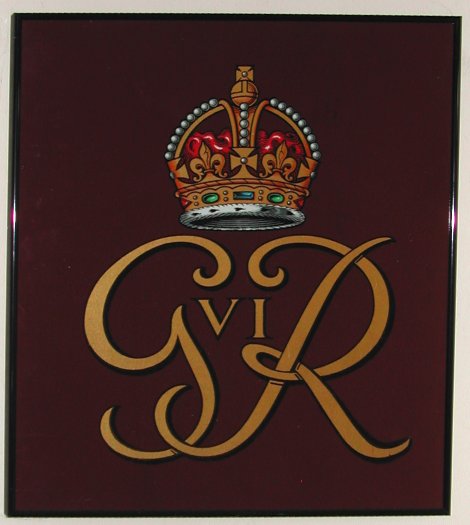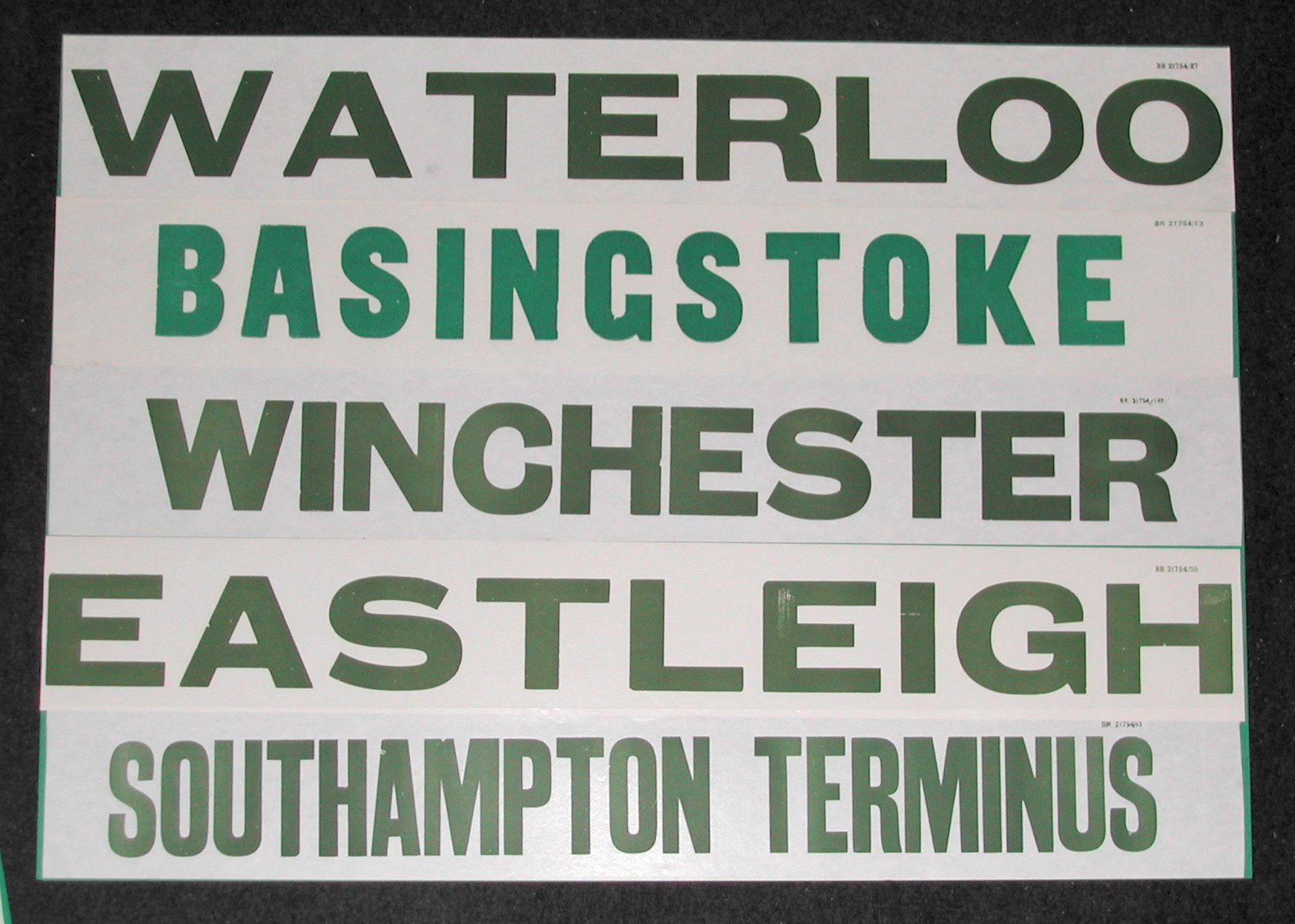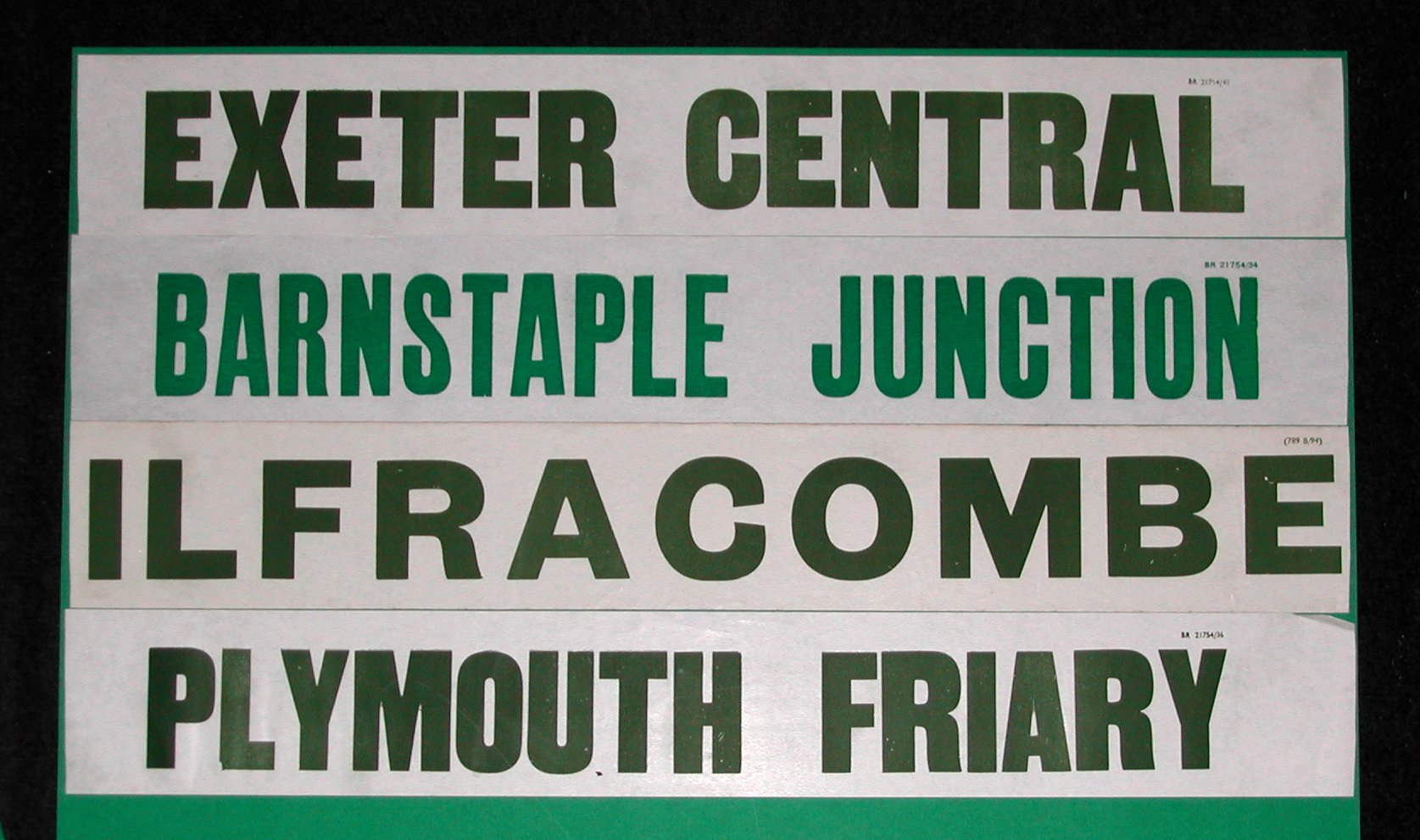A Pictorial Guide to some of our Railwayana
Almost as soon as this site became active, people started to ask questions about the railway signs and artefacts visible in some of the photographs of postboxes. I started collecting railwayana, as it is called, around the time I got my first post box,so that for a long time we had just one post box and one railway sign - Sutton Common "running in board" or RIB. Then a friend placed his superb Ditton Junction "totem" on loan to us and it sort of took off! Today, we still have Ditton Junction, but most of the signs are from the Southern Region of British Rail. This is deliberate, as I grew up in Basingstokeand was privilaged enough, as a six-year old, to witness the last timetabled steam workings there on Sunday 9th July 1967. I have a strong preference for SR green enamel signs as a result. This section is divided into those items produced on paper and the "hard" physical artifacts so much a part of the railway such as signals, signs, lamps etc..
Metal artifacts - click here
Printed matter - see below
POSTERS
One of the more unregarded, but artistically more interesting areas of Railwayana, posters tend to be very much "of their time" We do not have many, but our carefully selected collection illustrates design styles from the 1950's, 1960's and 1980's. Our more modern posters will become classics in their time.
|

|
A really superb 1958 execution for Western Region manages to combine the elegance of Regency England with up-to-the-moment design styles. The use of cyan and pink as the main colours meant this poster was not particularly striking when in situ, but closer inspection reveals a wealth of Robert Adam detail, period costumes and a strong focus on evolving neo-classical typology.Double Royal, paper, ex- John Wells collection 1992. |

|
The Southern Region ran an intensive service from London to the South Coasat via the elctrified main lines to Brighton, Bognor Regis and Eastbourne. This poster was developed soon after the 1965 Corporate Image change and thus features the arrows of indecision logo. The colours are more striking than the Bath poster, but the lower illustration of the downs harks back to earler Southern Railway designs from the mid-1930s and demonstrates the same naive style. Double Royal, paper, from auction 1998. |
|

|
The latest addition to our colection (left) is a local poster produced by Great Eastern trains for a local art exhibition. "Watercolours" was the title of an exhibition at the Chappel Galleries, situated directly below the famous Chappel railway viaduct in East Anglia. The artist, Wladyslaw Mirecki, is a personal friend and railway enthusiast. The poster was printed in very limited numbers to promote the month-long exhibition during Summer 2003 and is signed by the artist.Double Royal, paper, gift of the artist. |
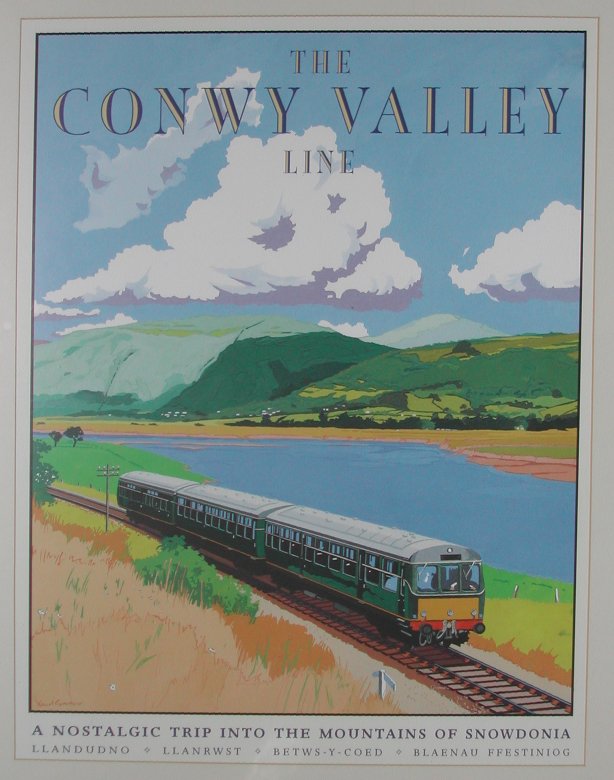
Although this poster looks old, it is actually late 1980's retro. Deliberately designed to evoke the classic rail posters of the late 1950s, the green Metro-Cammell DMU was chosen as the very last three-car sets of this class were deployed on the Conway Valley route into Snowdonia at the time. The original poster had |
featured Derby Lightweight units, also in green. The two Met-Cam sets were stationed at Chester and kept in immaculate darker DMU green livery with straw lining. The poster was displyed in Tourist Information offices across the region and could be purchased at principal stations. Coated paper, A2, purchased Llandudno Jnc 1989. |
|
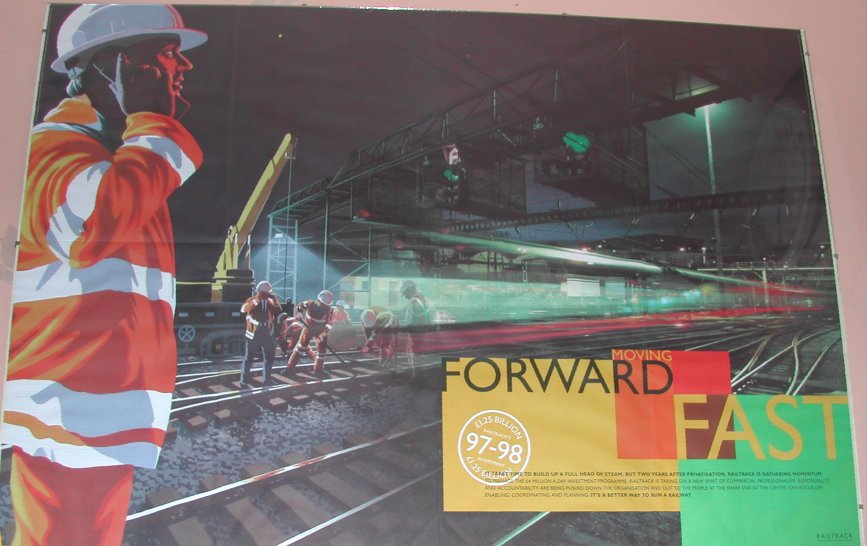
|
|
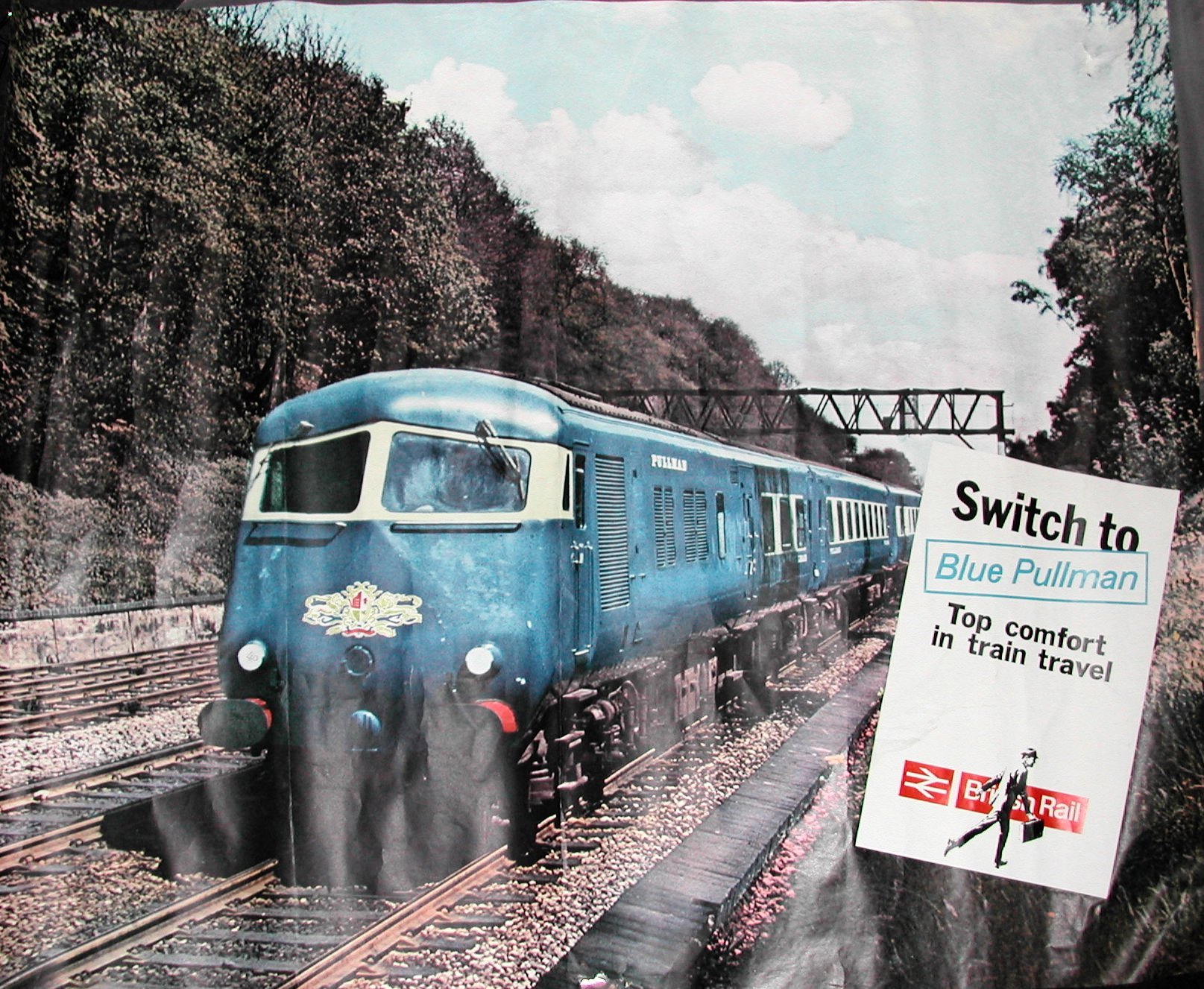 |
|
| Commissioned by Railtrack PLC for their Annual Report, "Forward Fast" was a modern re-working of a classic subject covered by Terence Cuneo in the 1960s - Tracklaying by Night. In the modern execution, the Railtrack foreman is to the fore, with the blurred image ofmoving trains and construction vehicles giving a modern impressionistic feel. The high visibilty clothing of the principle character makes this a very striking poster. Despite their faults, Railtrack commissioned several series of innovative, technically superb posters before they were thrown into illeagal bankruptcy by the lying Cabinet Minister, Stephen Byers. Paper A2, Railtrack 1998 |
|
Another production for Western Region, but this time dating from 1961 and the introduction of the Blue Pullman. An eight-car Western Region set is seen speeding Westward through Sonning Cutting whilst the legend exhorts us to switch to Blue Pullman for "top comfort". Unfortunately due to the poor riding qualities of the novel Metro-Schlieren bogies, the Blue Pullman was not as comfortable as the luxuriously upholstered steam-hauled carriages it was supposed to replace. Paper, Quad Royal, Bonhams Auction 1999. |
|
CARRIAGE PRINTS
Often described as "Landscapes under the Luggage Racks", carriage prints were a familar part of any railway journey from the 1930s to the 1960s. Many thousands of designs were produced, some photographic, some painted or drawn and some just plain informational or advertising. The most collectable are the 1950s series produced by Eastern Region and the slightly larger series produced by London Midland Region. For a detailed history of carriage prints, I recommend Greg Norden's superb book, now in it's second edition, "Landscapes under the Luggage racks".
|
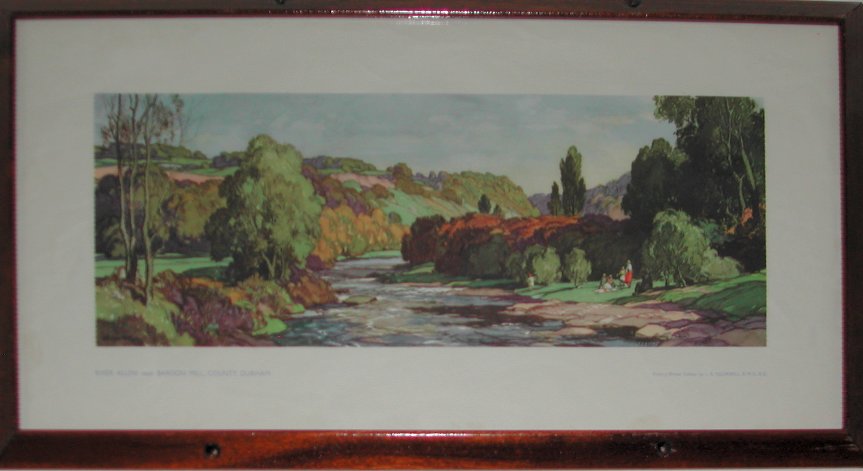
River Allen, Bardon Mill, Co Durham. Len Squirral |
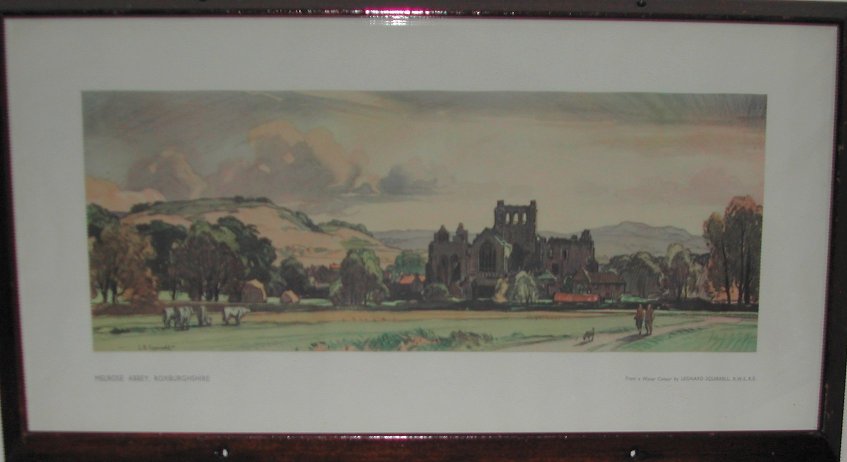
Melrose Abbey, Roxboroughshire, Len Squirral |
|
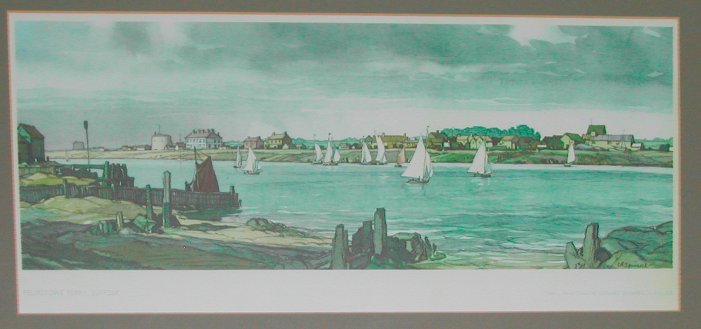
Felixstowe Ferry, Suffolk, Len Squirral |
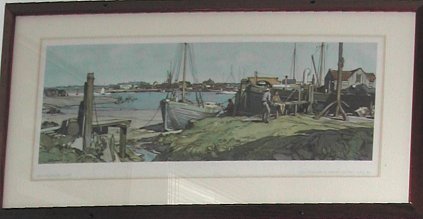
Brightlingsea, Essex, Len Squirral |
|
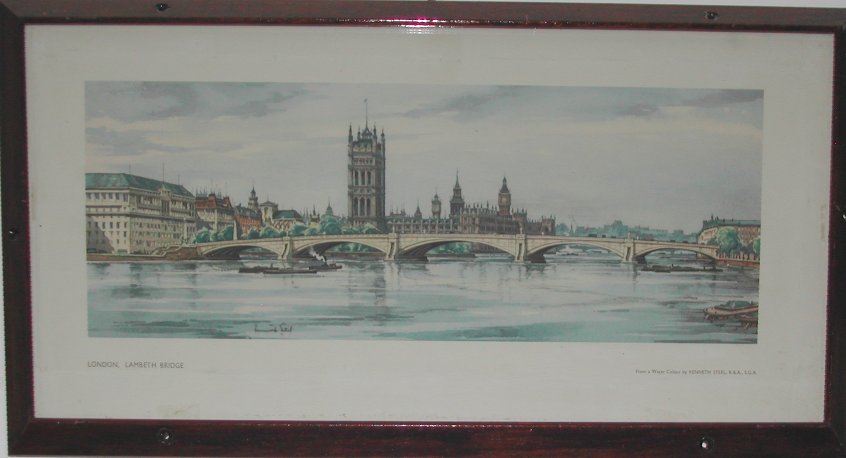
Lambeth Bridge, Ken Steele |
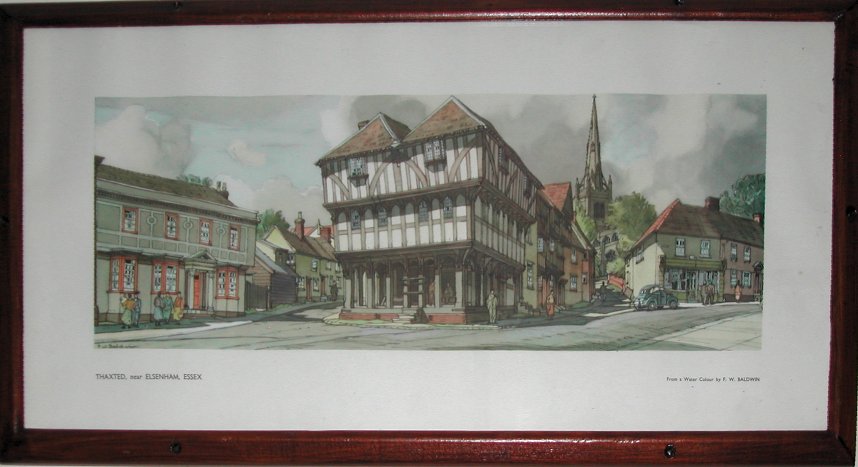
Thaxted Guild Hall, Essex, Frank Baldwin |
|
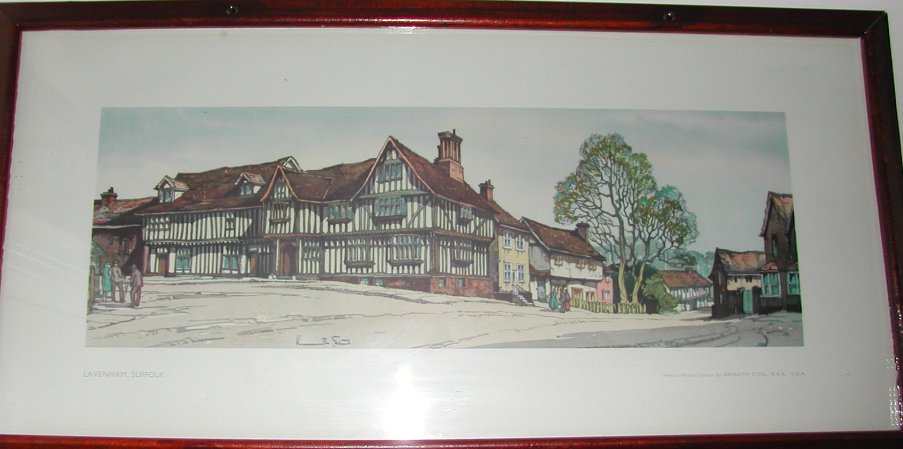
Lavenham Guildhall, Suffolk, Ken Steele |
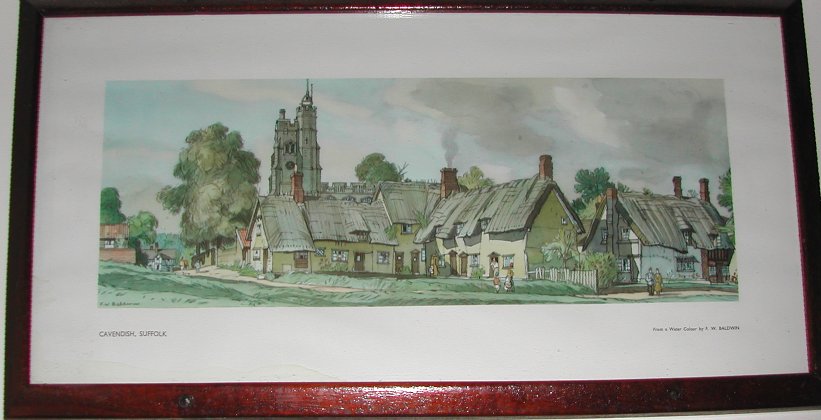
Cavendish, Suffolk, Frank Baldwin |
|
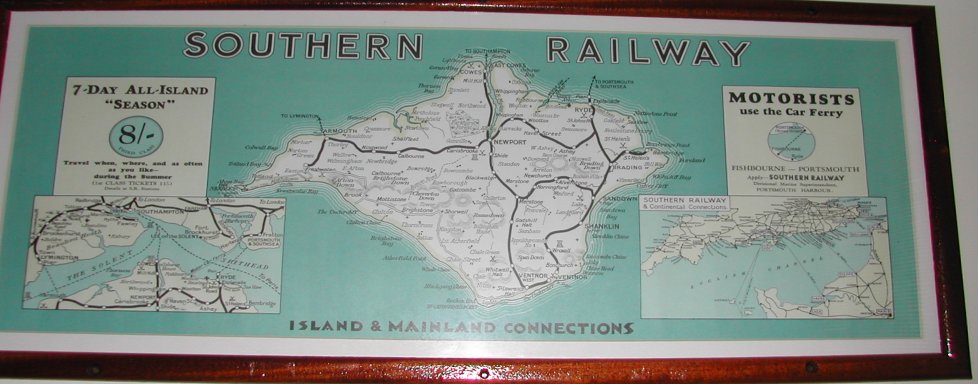
Isle of Wight route map, SR Publicity Dept |
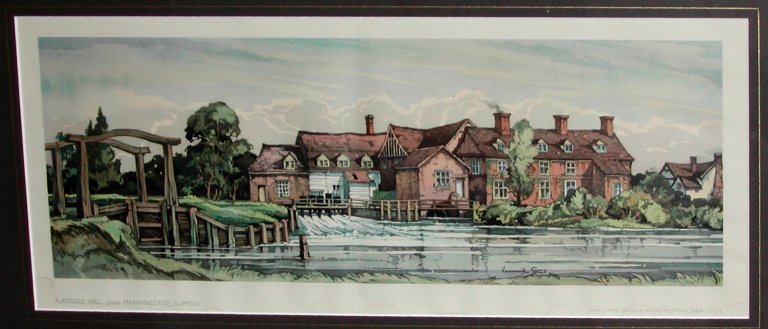
Flatford Mill Suffolk, Ken Steele |
|

Maldon, Essex, Henry Denham |
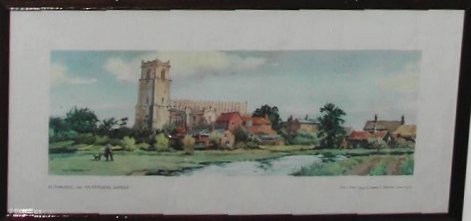
Blythborough Church, Suffolk, Henry Denham |
|
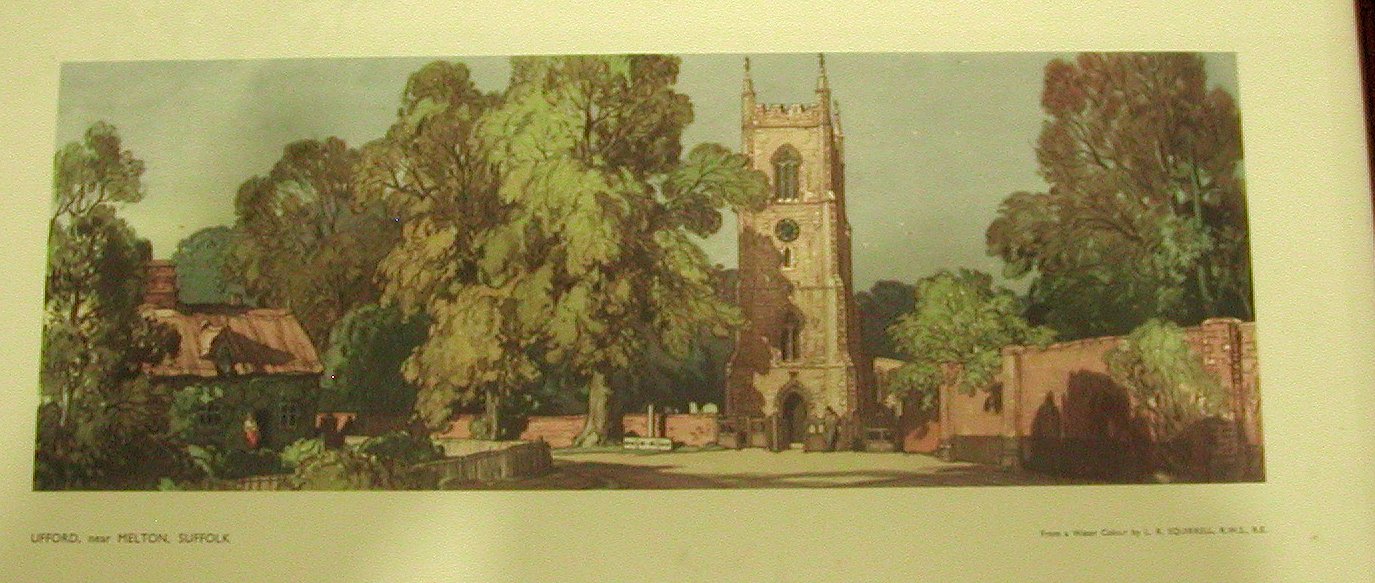
Ufford, Essex, Len Squirrel |
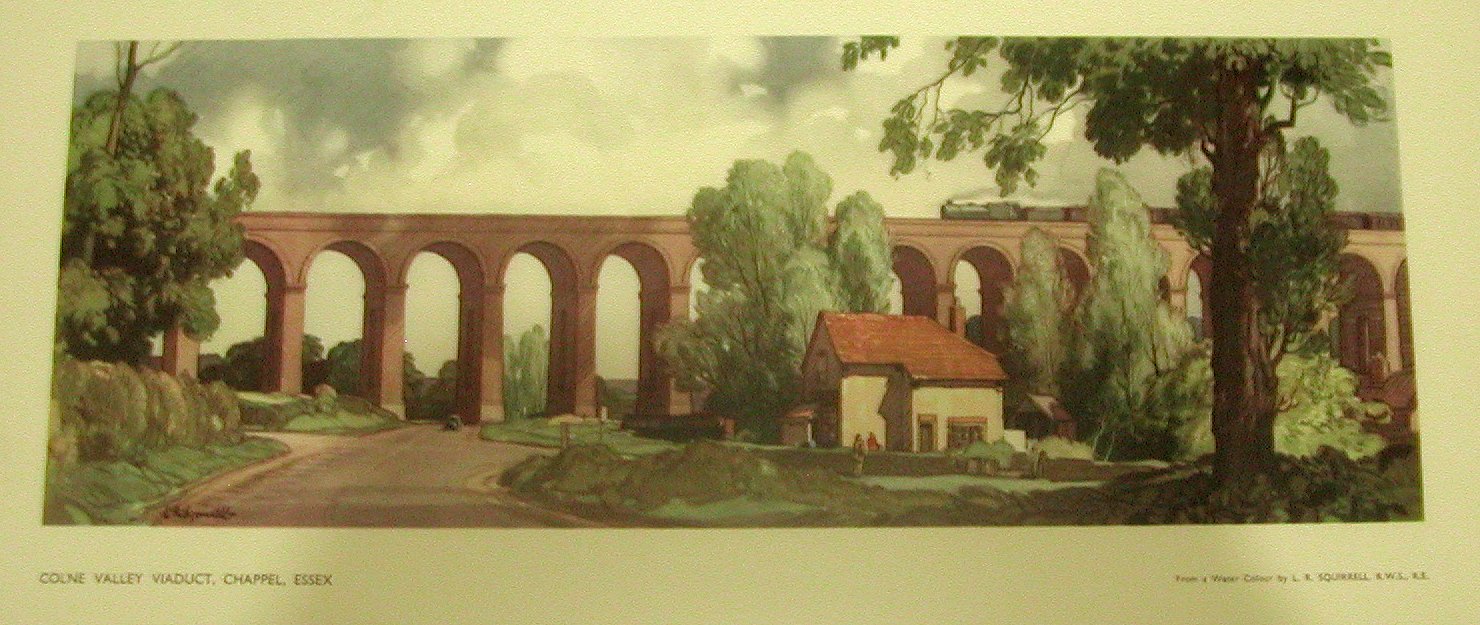
Colne Valley Viaduct, Essex, Len Squirrel |
|
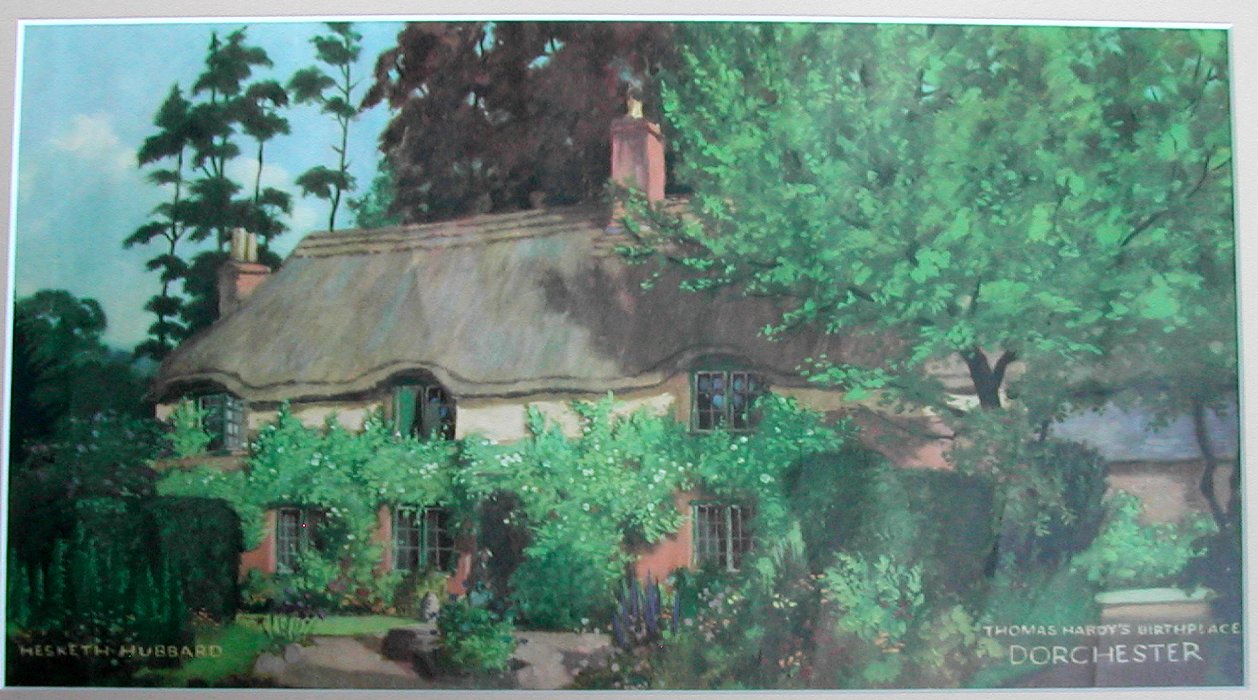
Rareset of the Rare 1 -
Thomas Hardy's Birthplace, Dorchester by Hesketh Hubbard
From a series of six prints produced by the Southern Railway in 1946-48 |
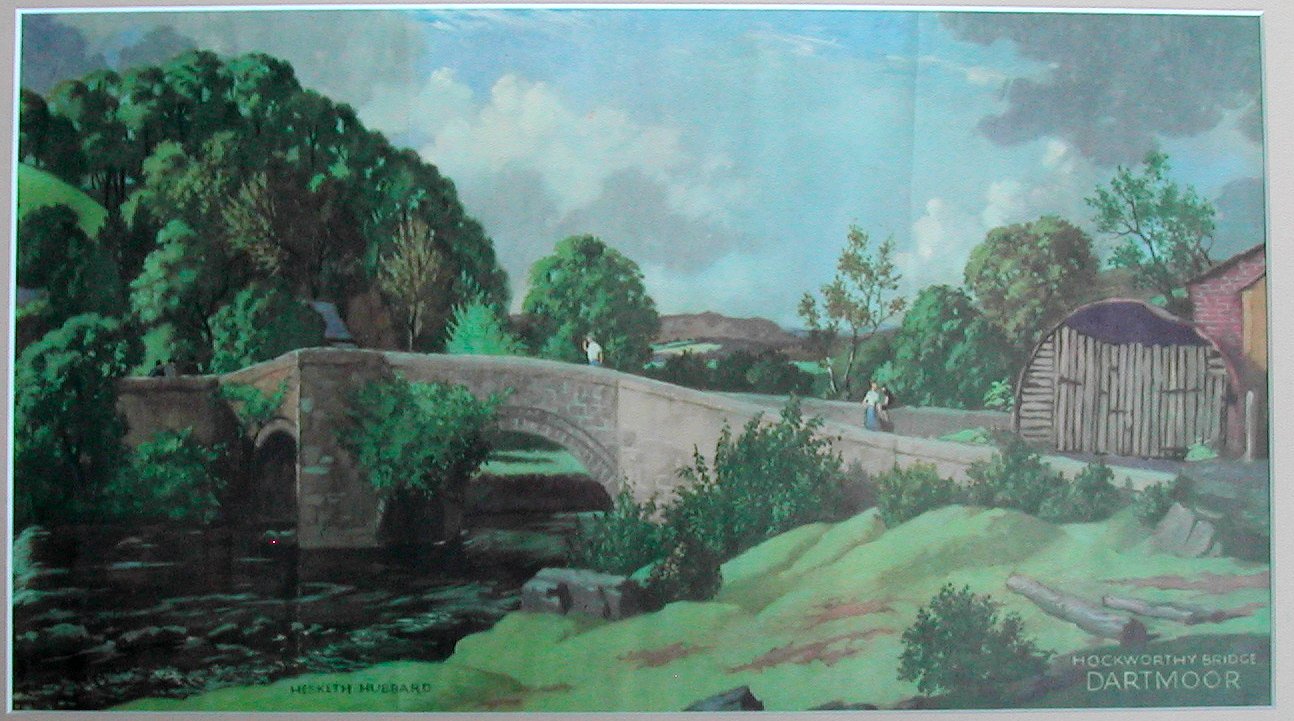
Rarest of the Rare 2 -
Hockworthy Bridge, Dartmoor by Hesketh Hubbard
From a series of six prints produced by the Southern Railway in 1946-48 |
|
|
DESTINATION DOOR STICKERS
The Southern Railway and later Southern Region ran many holiday trains as multi-part sets. Individual coaches were detached and attached to/from different stations along the mainline, the coach or coaches then making their way down a branchline to the seaside terminus. Trains such as the Atlantic Coast Express could have as many as 13 detachable coaches serving nine destinations. As well as wooden roof boards showing the destination, each door window in the carriage was labelled for passenger convenience with self adhesive paper labels. We have a very good selection of these all acquired from Collectors Corner in London before it moved to York.
|
